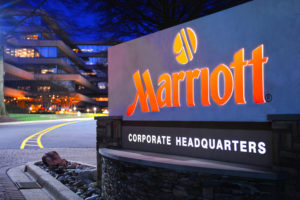Marriott International just bought over the uber-luxury hotel group, Starwood, to become the biggest luxury hotel group in the world. The challenge now lies in merging two different cultures over 30 brands.

In what is clearly the biggest luxury story of the entire year, Bethesda, Maryland-based Marriott International Inc. acquired Starwood Hotels & Resorts, among the biggest and the best run luxury hotel group, for $13.6 billion. The result: Mariott International has leapfrogged into bigger league, becoming the largest hotel group in the world and one of the world’s largest employers.
There is more to this merger than just the merging of executive suites. Everything from marketing and sales to the two companies’ robust IT operations will be subject to review after the merger, including the merging of the two hotel companies’ loyalty rewards programs. The new Marriott now has more than 5,700 hotel properties worldwide and more than 1 million hotel rooms. The merger brings together over a dozen brands, including behemoth brands like Ritz-Carlton, Courtyard and JW Marriott with Sheraton, Westin and St. Regis.

Marriott clearly is the big winner here. The company was founded by John Willard Marriott and his wife Alice in 1927 with a root beer stand in D.C. The company opened its first hotel, the Twin Bridges Marriott Motor Hotel, at the foot of the 14th Street Bridge in Arlington in 1957. Marriott now eclipses Hilton Worldwide’s 773,000 rooms and the 766,000 rooms that are part of the Intercontinental Hotels Group family, according to STR Global. With this acquisition, Marriott announced that it has even overtaken Taj Hotels Resorts and Palaces to officially become India’s largest hotel company with 79 operating hotels and 18,000 rooms.
Rajeev Menon, Chief Operations Officer, Asia Pacific (excluding greater China) at Marriott International said, “We operate 14 brands in India now with the 15th one, W, opening very soon in Goa. As a company we have always been bullish on India. It is our second most important market after China.” He expects the mid-market segment to drive bigger growth for the combined entity in India. “While there remains ample growth opportunities for other luxury brands, it’s the mid market space with brands like Courtyard by Marriott, Aloft, and Four Points that will grow at a much faster pace as we get into secondary and tertiary markets here,” he added.
The merger has spelled good tidings for the UAE market, where Marriott International is likely to create around 6,000 new jobs in the next three years, Alex Kyriakidis, President for the Middle East and Africa, has said. The combined portfolio of 52 hotels will grow to 80 with 23,300 rooms in the next four years in the UAE.

The deal was nearly derailed when Anbang Insurance Group, a Chinese conglomerate, made an all-cash offer that exceeded Marriott’s initial $12.2 billion bid, prompting a bidding war that ended this spring when Anbang pulled out. But the Chinese Ministry of Commerce said it needed more time to review the terms, and the process dragged out through the summer. On Tuesday last, regulators finally gave their approval.
According to a report by CWT Solutions Group, a business travel consultancy group, the one consequence of the merger is a decrease in competition in the market. With Marriott and Starwood combined, 30 hotel brands will be under the same corporate umbrella. For instance, in Minneapolis, US, Marriott controls about 30% of corporate hotel spending; with Starwood added to its portfolio that will rise to a half. In Mexico City Marriott’s share will climb from about 20% to 48%. In Philadelphia and Los Angeles, it will control 46% of the market. Even in cities where Marriott has had a much smaller presence, such as Paris and Tokyo, its market share will more than double, giving it a substantial foothold. Also analysts warn that it makes no real sense for Marriott to hold on to 30 separate brands and it may hive off some of the brands under its umbrella, for instance, the Sheraton.

Worried are also the loyalty club members of Starwoods. Analysts reveal that on business travelers form the fulcrum of the Starwood Preferred Guest program, among the premier hotel rewards club in America. With a perfect 100 rating, compared with 88 for Marriott Rewards. For existing Starwood members, a new combined club could mean a devaluation of existing Starwood points; for Marriott members, the effect could be the opposite. Some say that the Starwood’s program is so good that it is credited with forcing other hotel groups—and Marriott in particular—to improve their versions just to compete. The combined company might no longer feel the incentive to be so generous.
A merger of this size is bound to create shock-waves across the hotel industry. Loews Hotels chairman Jonathan Tisch, who is friends with Bill Marriott said, “You have two different cultures that overlap among the 32 flags. They have different guest loyalty programs, and everyone loves their points. They’ve got their different credit card deals…I’d never bet against Marriott because they’re really smart people, but they have their work cut out for them.”


